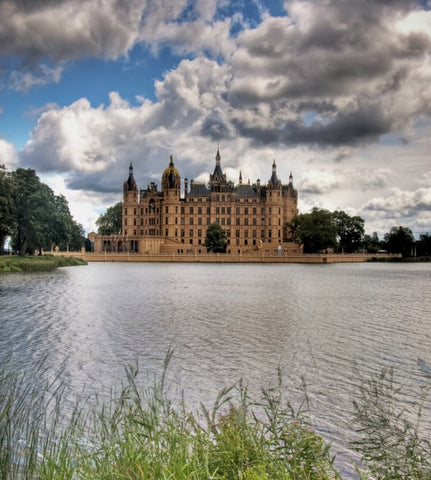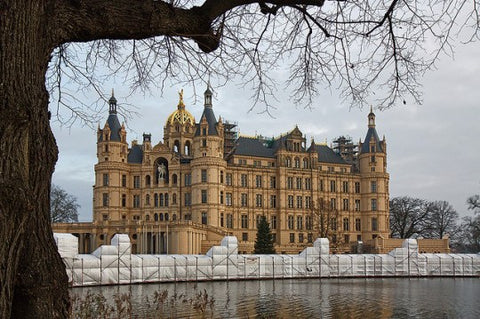Castle Spotlight, Schwerin Castle, Germany

The foundation of the city of Schwerin took place in the same year. Schwerin became seat of a bishopric.In 1167, Henry gave the County of Schwerin to his vassal Gunzelin von Hagen, and the rest of the country around the city was returned to Niklot's son Pribislav, forming a ducal hereditary line that lasted until 1918. Under Duke Johann Albrecht I. (1525–1576), the fort became a castle, and the defensive functionality of the fortress was replaced with ornamentation and concessions to comfort. The use of terracotta during the Renaissance was dominant in North German architecture, and Schwerin's terracotta was supplied from Lübeck. Johann Albrecht rebuilt the chapel in the castle in 1563 and it became the first protestant church in the state. . The architecture was inspired by churches in Torgau and Dresden. The Venetian Renaissance gate, its gable showing the carrying of the cross, was made by Hans Walther (1526–1600), a sculptor from Dresden.Windows on the northern face show biblical illustrations by well-known Dutch artist Willem van den Broecke (called "Paludanus") (1530–1580).

For the interior design, Heinrich Strack (1805–1880) from Berlin was chosen. There was a fire in the castle in December 1913. The revolution in 1918 resulted in the abdication of the Grand Duke, but only the exterior reconstruction had been completed. It later became a museum and in 1948 the seat of parliament. The German Democratic Republic, opposed to nobility, used it as a college for kindergarten teachers from 1952-1981. Then it was a Museum again until 1993. The Orangerie had been a technical museum since 1961. From 1974 on, some renovated rooms were used as an art museum. Since late 1990, it is once again a place of government and representation as the seat of the parliament of State of Mecklenburg-Vorpommern. Since then, massive renovation efforts have been conducted and are, due to the complexity of a castle of this size, still in progress.












